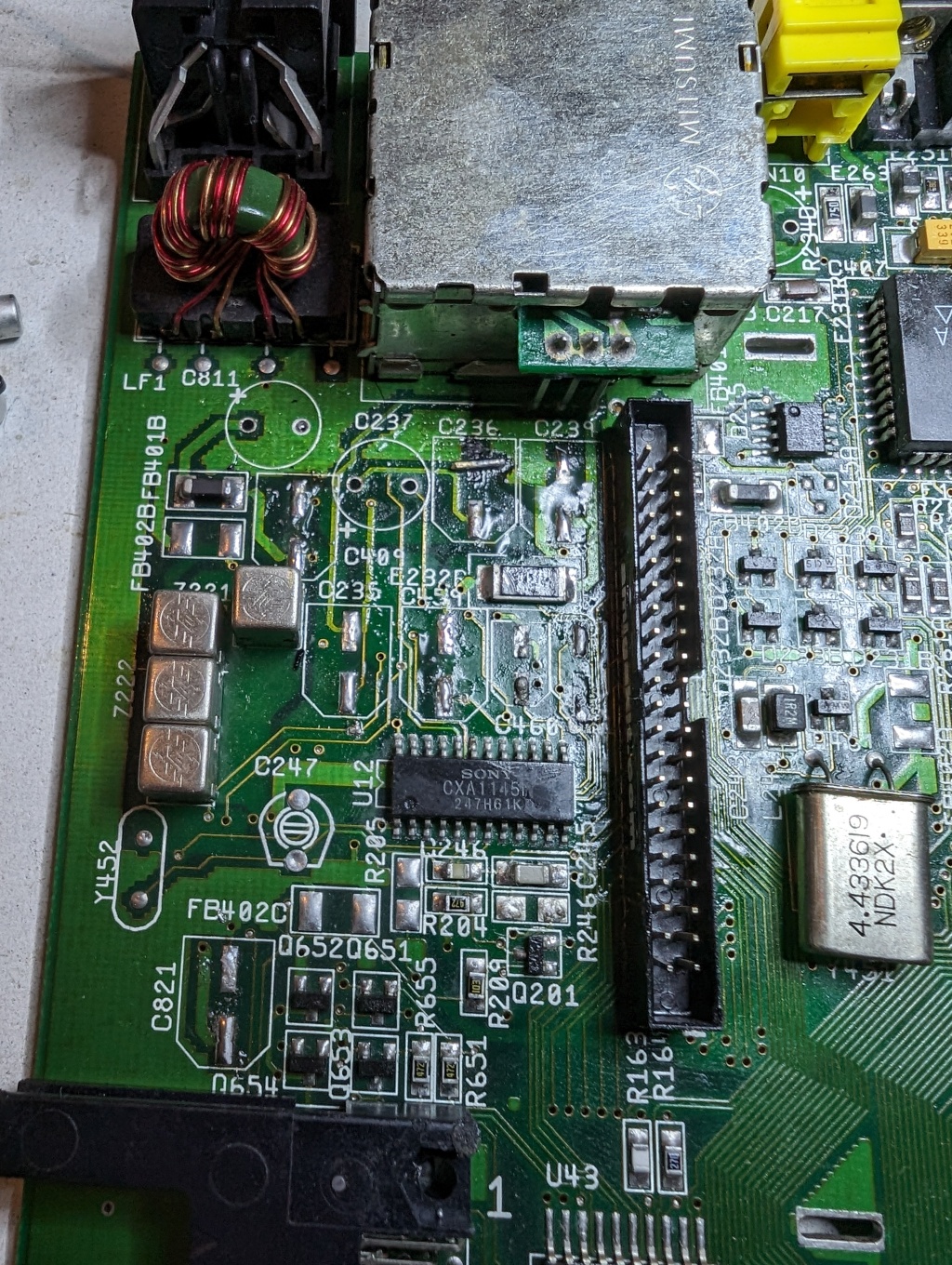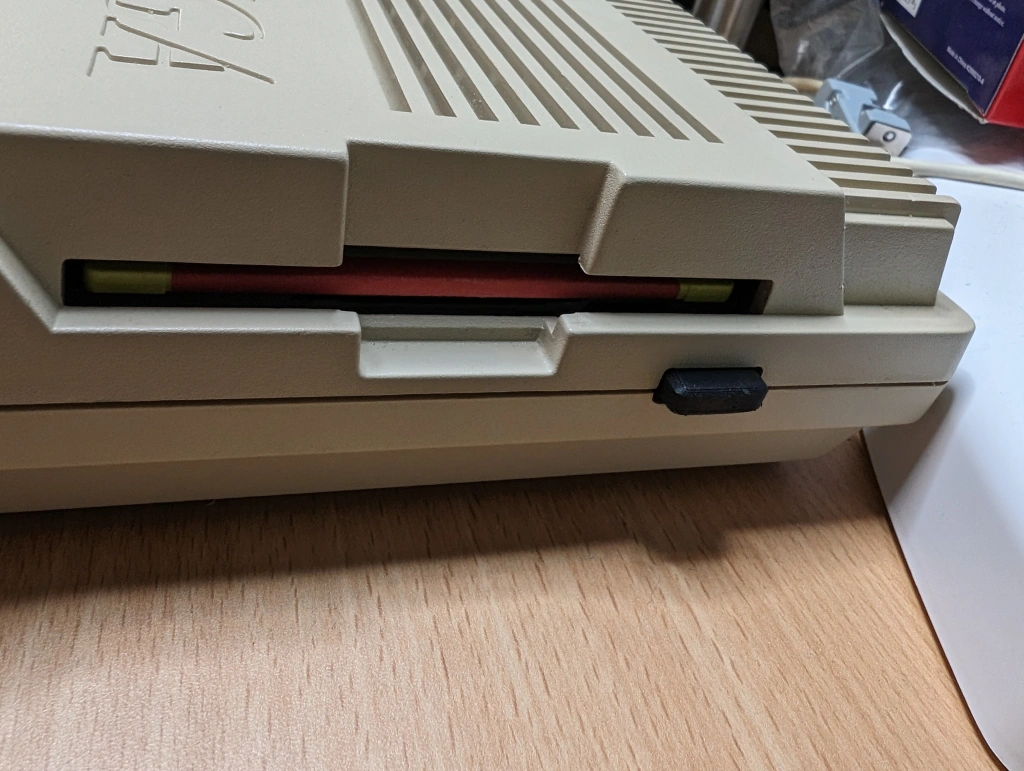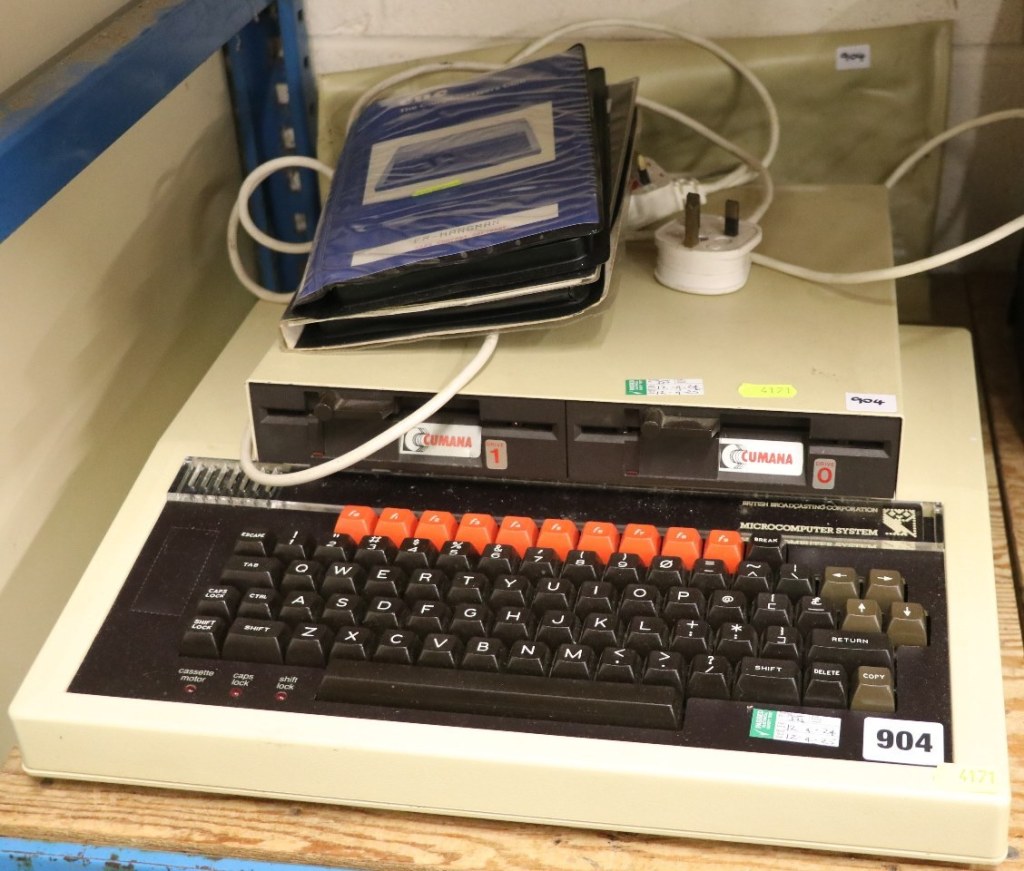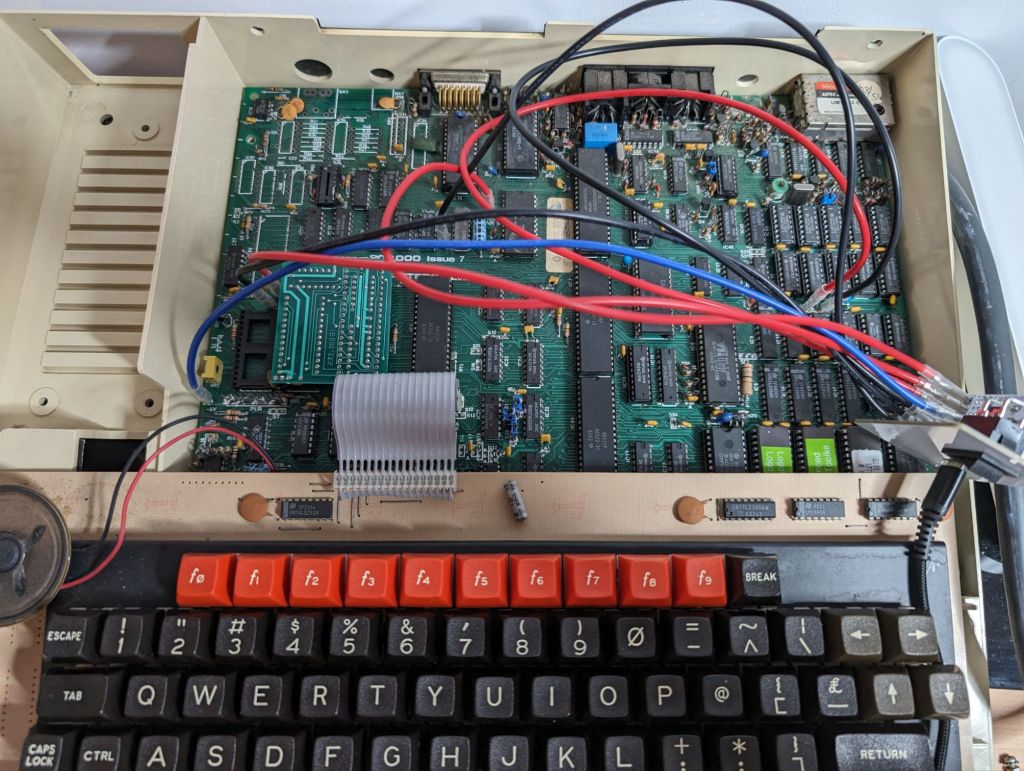Unfortunately, in the tech sector, just like many other sectors, there are scammers around. When you are dealing with electronics this is typically in the form of chips that have had their markings changed, usually to make them appear as if they are a more expensive chip. This has happened to me, so I’ll talk a bit about it.
As part of my work restoring the Acorn Atom, I replaced the 6502 CPU with a much lower power CMOS variant made by Rockwell, the R65C02. But something was bugging me. In my tests, I didn’t notice any power drop between that and the original CPU.
You see, the original 6502 used an NMOS process which is typically much more power hungry than CMOS. On top of this, the R65C02 was made using a smaller fabrication size. These things combined means that in-theory it should draw an order of magnitude less power. The R65C02 has an extended instruction set, so it is usually easy to identify.
This is the chip I bought.

What initially bugged me is that the printing was far too bright compared to pretty much any chip I’ve worked with. Something just seemed “off” about the printing too, but I couldn’t put my finger on it.
Testing
As with all things tech I’m not sure about, I start testing them. First of all I tried the acetone test. You see, the printing used on genuine ICs is designed to withstand the harsh cleaning chemicals used during manufacturing. Whereas chips that have had their markings changed typically use a cheaper painting process, which can often be removed with acetone. Straight away some of the printing starting coming off on the acetone soaked cotton bud I used. It looked pretty smeared and faded after a few seconds.

Next up was a logical test. My BackBit Chip Tester Pro v2 can not only test the function of a 6502 CPU, but also tell you which variant it is (even detecting an Atari Sally variant). I bunged it in and hit the test button.

That explains a few things, this is really a standard NMOS 6502, not a 65C02.
Other Signs
There is one other sign I found out later which proves that this is not a genuine chip, the date code. You can see that it says 0032, this means the 32nd week of the year 2000. The problem with that is in 1999 the semiconductor division of Rockwell split out into a company called Conexant. When this happened, any chips manufactured suddenly switched to the Conexant branding, which is a completely different logo.
In addition, I believe, based on web searches, that the wafer ID for an R65C02 is 11450, not 11473 as marked here.
This was annoying because the seller is based in the UK and claims you should buy from them because you take your chances buying from China.
Another Chip
Once I figured out my chip was fake, and before I realised the date code issue, I bought another one from a different seller.

The printing looked a bit better on this one at least, but 30th week of 2015? I very much doubt it. I can’t find evidence of any being manufactured after the early 2000s. Let’s whack it on the tester…

That’s more like it, this is at least a R65C02 CPU. My best guess is the speed grade is the issue. The ‘3’ on the end means that it is rated to run at 3MHz, it is likely really just a 2 or 1MHz chip that has been marked up to give it a higher value. This is good enough for me as the Atom will only run it at 1MHz.
Physical Comparison
Here are the two chips claiming to be 65C02s together with an original 6502. Normally I would expect there to be printing on the bottom as well as the top.


On the bottom of the middle chip is what appears to be logographic characters. I do not know what these represent, or even if I have them the right way around. Update: see the end of this post for the translation the community figured out.

Conclusion
This is quite a wide spread problem, and it is difficult to find genuine old parts when even UK sellers are selling parts that are not as they are marked.
If, like me, you are not pushing them to their designed limits, that may be OK. But sometimes it really isn’t, and sometimes the chip is nothing like what is shown on the markings, leading to potential physical damage to the machine it is used in.
As a side note, I have designed a prototype board that allows use of a brand new 65C02 IC made by Western Design Center in retro machines. The Western Design Center chips have a slightly different pinout to the others, so need a slight conversion. PCBs for this are coming soon.
Update 2023-12-07
This post got added to Hacker News and was in the top 10 for a while. Thank you to whoever did that. In the comments the Chinese handwriting was discussed and it seems that a translation has been found.
As a native speaker I think its “贤”, just rotated right by 90 degree.
libreliu on Hacker News
It appears when translated this means “virtuous, worthy, good; able”, which I guess (and other people guess too) means that the chip functions, not that it is a genuine / virtuous chip.
Also thanks to those who commented with minor corrections on Hacker News.






Leave a comment